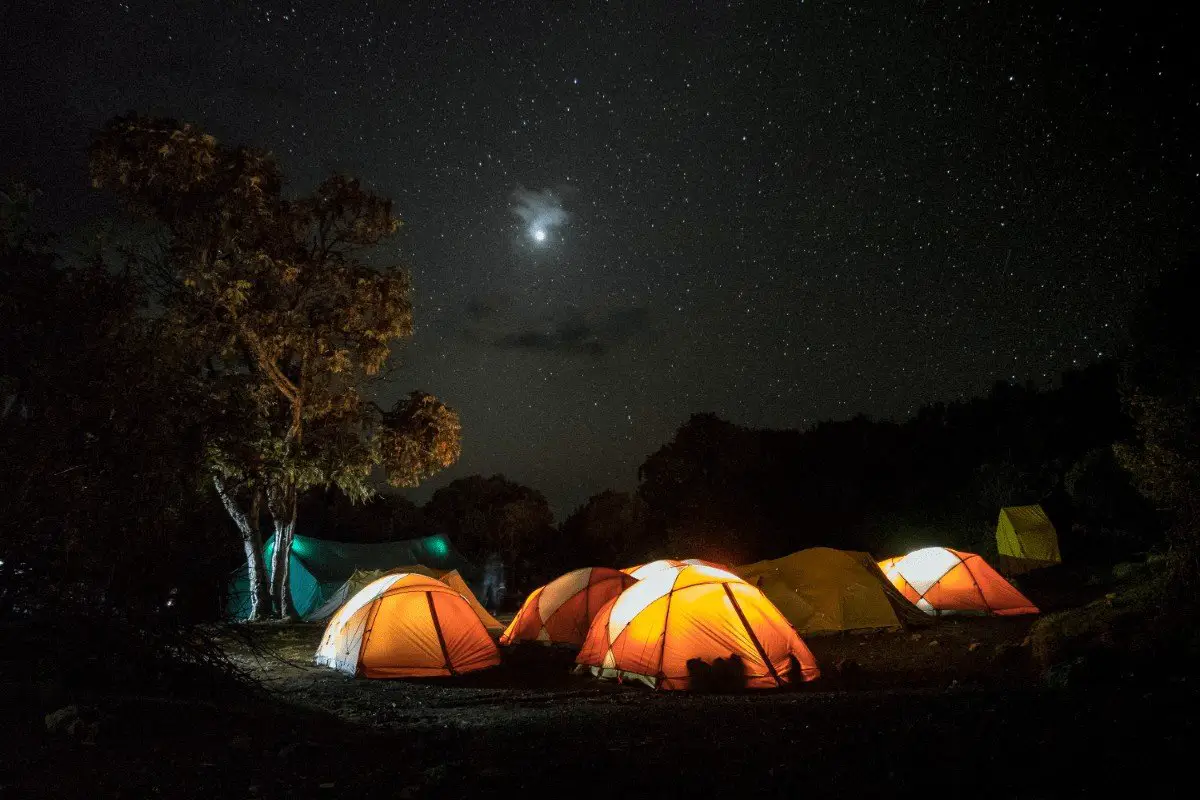Last Updated on June 17, 2022 by Ecorf
There are different types of tents and these are defined by various factors such as shape, intended purposes, weight, number of people they sleep as well as price and number of entrances among others. For example, there are specific types of tents that are perfect for the Boy Scouts of America (BSA). The following are the 4 types of tents BSA that you can consider for safe scouting.
Table of Contents
Types of Tents BSA
When scouting, you should aim to improve your knowledge about safety and survival tactics outdoors. Scouts can embark on backpacking treks and they need the right support and equipment to enjoy the expedition. A tent is one such vital component that you should get to enjoy your adventure. The following are some of the tents that you can consider for BSA adventure.
Dome Tent
A tent that consists of a dome shape is often spacious and it has more headroom that allows you free movement while resting inside. The dome tent is stable even in strong wind since it is free-standing and does not require any stakes. The bending poles over the body of the tent also improve its stability.
Dome tents constitute the major common type of tent consisting of two flexible poles that cross each other on the top of the dome and are anchored on each corner of the dome. The other important aspect about dome tents is that they are very strong and they can withstand different types of conditions.
However, dome tents can be difficult to set up and some have a small porch area. Dome tents are also suitable for up to four people and they become unstable as they become bigger. The following are the pros and cons of dome tents.
Pros
- Affordable
- Lightweight
- Sufficient headroom
- Easy to set up and pull down
Cons
- Not very stable in the wind or bad weather
- Unstable if larger in size
- Small porch area
A Frame/Ridge Tent
The ridge/A frame tent is another common type of tent that can be used for scouting purposes. As the name suggests, A-frame tent resembles the letter A and it comes with a rainfly, mosquito net as well as waterproof floor. The shape of the tent is designed in such a way to keep you dry when it is raining.
The tent is designed to protect you against weather elements and other vagaries like insects that can disturb your peaceful rest. The A-shaped part of the tent is designed to give you enough headroom such that you can even stand inside the tent while doing other tasks.
This type of tent consists of thick canvas that is supported by two vertical poles at each end and another horizontal pole. The stability of this type of tent depends on how the tie-outs and guylines are placed. However, ridge tents during the contemporary period use aluminum poles together with waterproof nylon or polyester. This type of tent is suitable for two people.
Pros
- Waterproof
- Durable and also sturdy in bad weather condition
- Easy to set up
Cons
- Limited headroom
- Heavy canvas material
- Challenging to put well
Wall Tents
A wall tent is ideal for a long outing at a BSA council camp since it can accommodate many scouts. It has a large floor space that can be used by many scouts to sleep. The walls of the tent are usually made of polyester-cotton blend, canvas or nylon.
Wall tents can also play a significant role in protecting you against wind and other weather elements like the cold. The material of the tent can keep you warm when it is cold. Canvas material can also keep you cool when it is hot.
The tent also has a ridge pole holding two vertical poles upright to keep it erect. When it is raining, the tent is designed in such a way to keep you dry inside. The tent also has large windows that can be opened when it is hot to improve interior ventilation. The windows consist of mesh which helps to improve the free circulation of air.
Pros
- Durable
- Waterproof
- Can sleep more people
Cons
- Too heavy
- Can be complex to set up
Breathable Tents
Breathable tents are also good for BSA purposes since they are designed to protect you against precipitation. When it is raining, the tent can keep you dry inside such that you can enjoy your adventure.
The same material on the tent also helps the moisture that is produced from your body to escape. When you are using this particular tent, there is no need for a rainfly to protect you in case it rains. The breathable tent with a single wall is also designed to withstand other harsh conditions while at the same time it is easy to carry.
Pros
- Lightweight
- Durable
- Waterproof
Cons
- Often expensive
- Small interior room
- Can be damp inside in warm weather
Taking Care for your Tent
When you get the right type of tent for your BSA camping, you should also know that it is crucial to take good care of your temporary shelter. You can follow some of the following factors:
- Remove your shoes when you get inside your tent
- Seal all seams
- Use floor tarp to prevent abrasion with surface
- Find a shaded campsite
- Clean the tent regularly
- Pack your tent when it is dry
Conclusion
There are different types of tents and these are defined by various factors like shape, material, the purpose of the tent, as well as the number of people that can be accommodated. When planning to go on your scouting expedition, I believe the information in this article can be helpful.
However, you should also do some research and try to get as much information as possible about the different types of BSA tents available on the market. You can leave your comment or other questions below.





